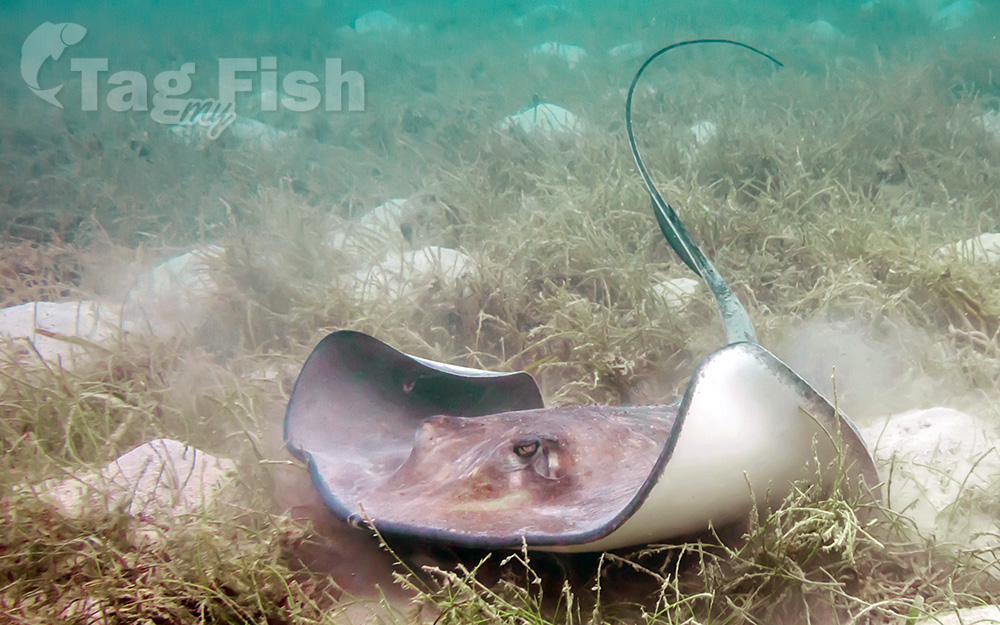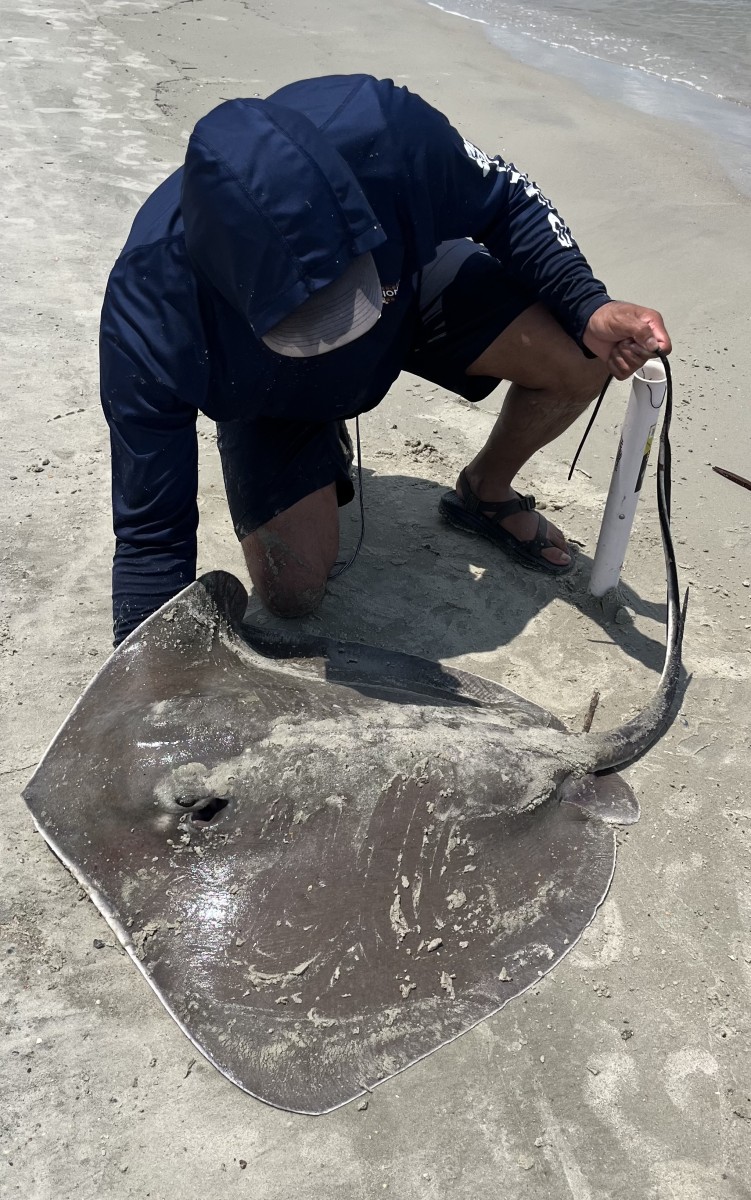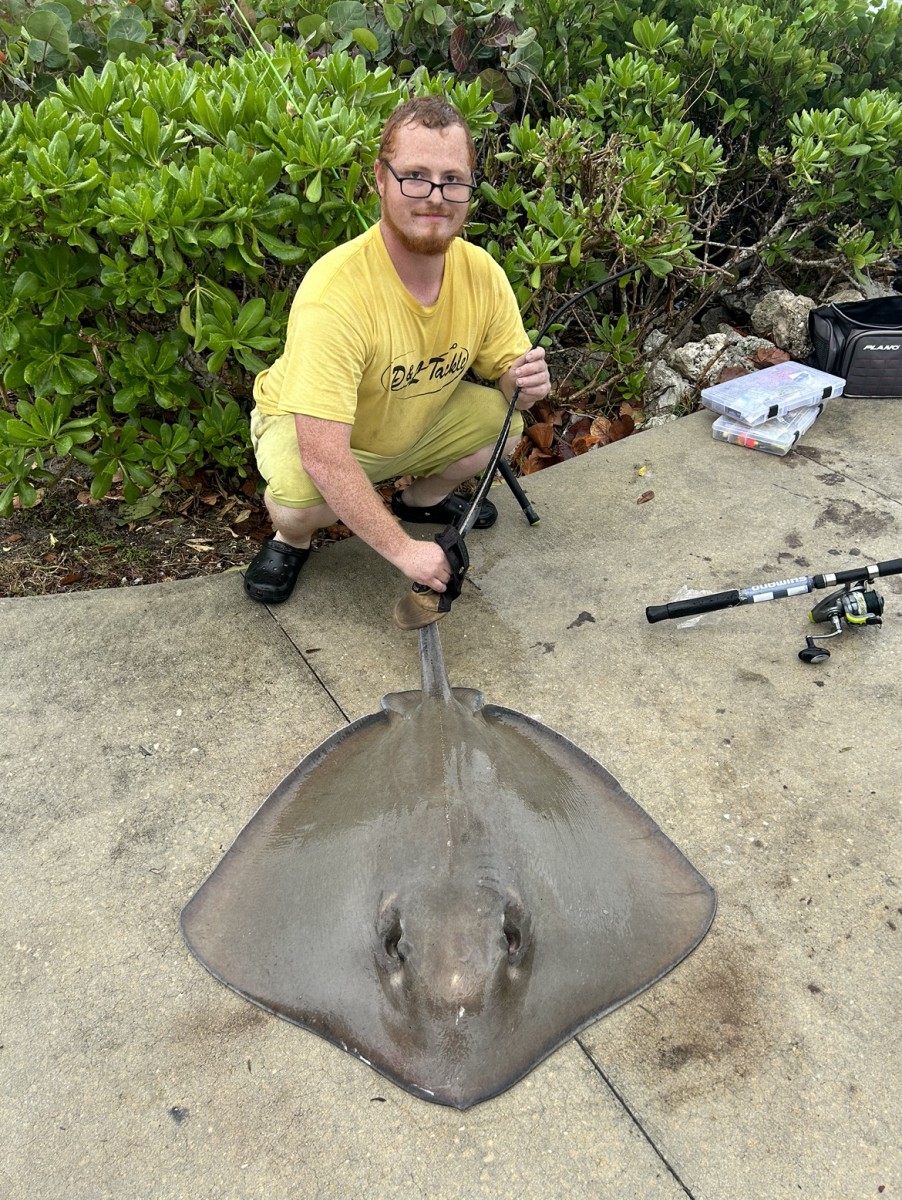Southern stingray
(Hypanus americanus)

Classification
General data
The southern stingray (Hypanus americanus) is a whiptail stingray found in tropical and subtropical waters of the Western Atlantic Ocean from New Jersey to southern Brazil. It has a flat, diamond-shaped disc, with a mud brown, olive, and grey dorsal surface and white underbelly (ventral surface). The barb on its tail is serrated and covered in a venomous mucus, used for self-defense.
The southern stingray is adapted for life on the sea bed. Its flattened, diamond-shaped body is more angular than other rays. The top of the body varies between olive-brown and green in adults, dark grey in juveniles, whilst the underside is white. The wing-like pectoral fins are used to propel the stingray across the ocean bottom, whilst the slender tail possesses a long, serrated and venomous spine at the base, used for defence. These spines are not fatal to humans but are incredibly painful if stepped on. The eyes are situated on top of the head of the southern stingray, along with small openings called spiracles. The location of the spiracles enables the stingray to take in water whilst lying on the seabed, or when partially buried in sediment. Water enters the spiracles and leaves through the gill openings, bypassing the mouth which is on the underside. Female stingrays can grow to a disc width of 150 cm, while the smaller male stingrays reach a maximum size of 67 cm.
Southern stingrays are nocturnal predators, who spray water from their mouths or flap their fins vigorously to disturb the substrate and expose hidden prey. This bottom-dwelling species is often found singly or in pairs and can reach population densities estimated up to 245 per km2 in certain shallow systems thought to be nursery grounds.












